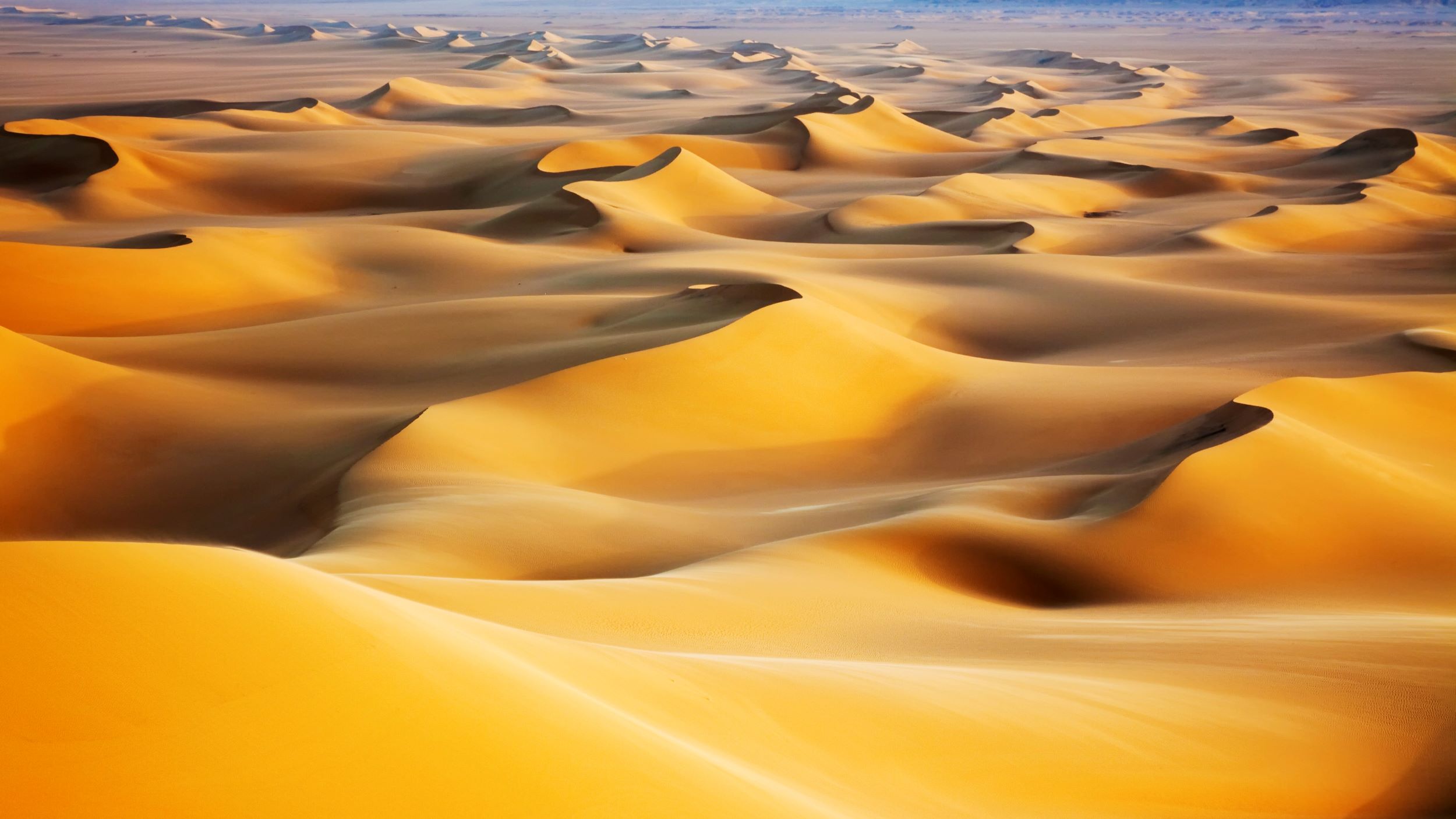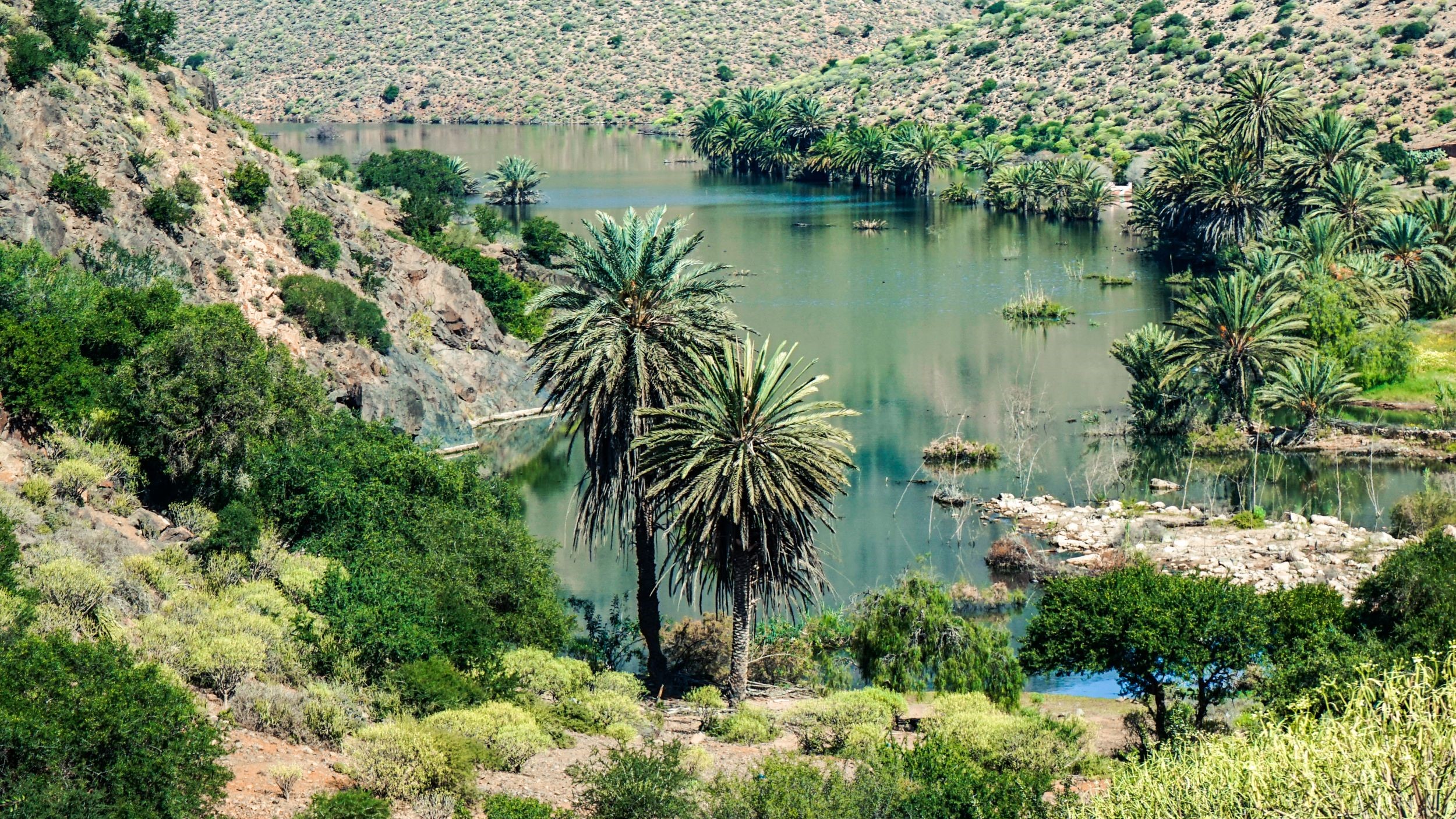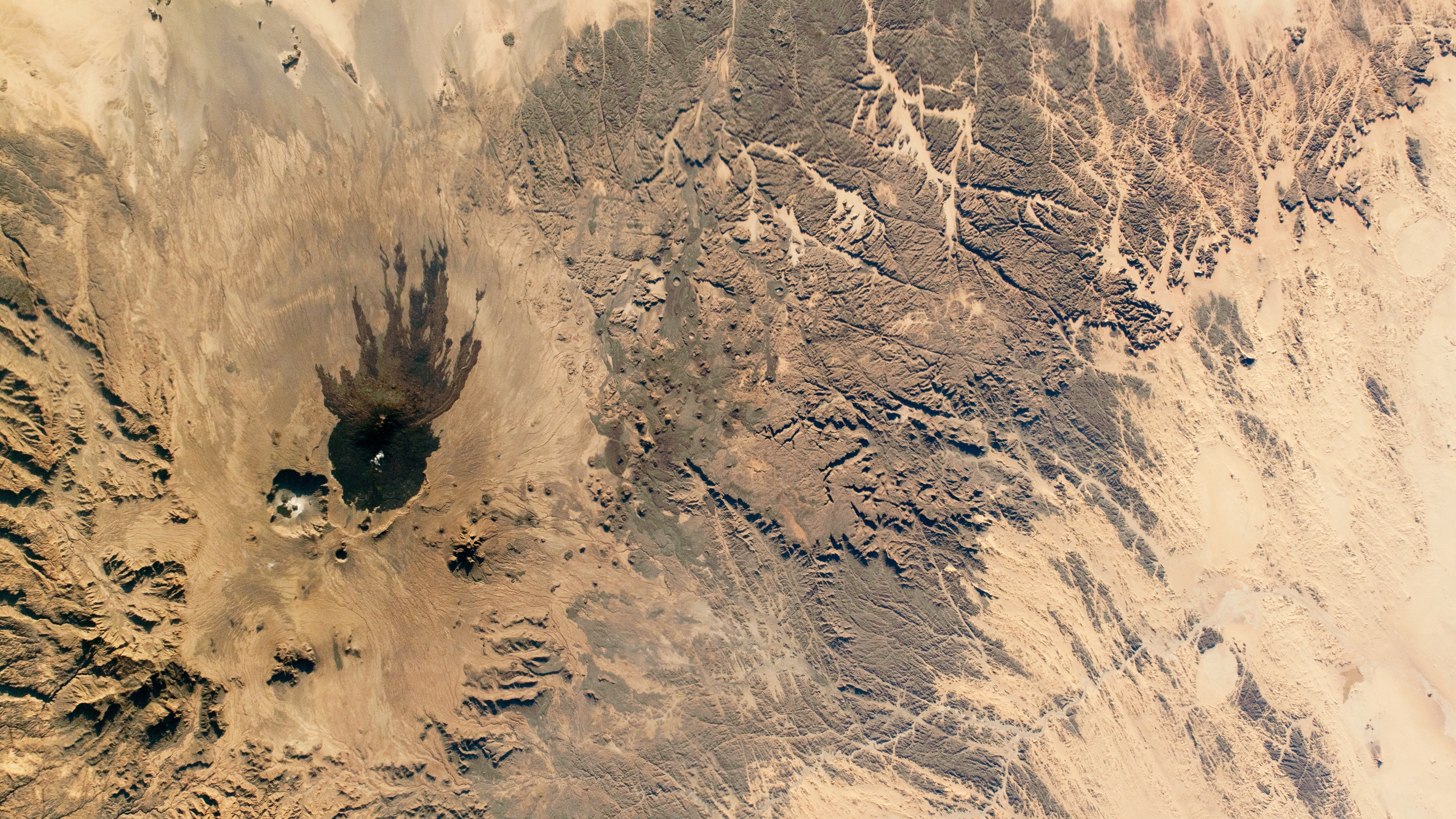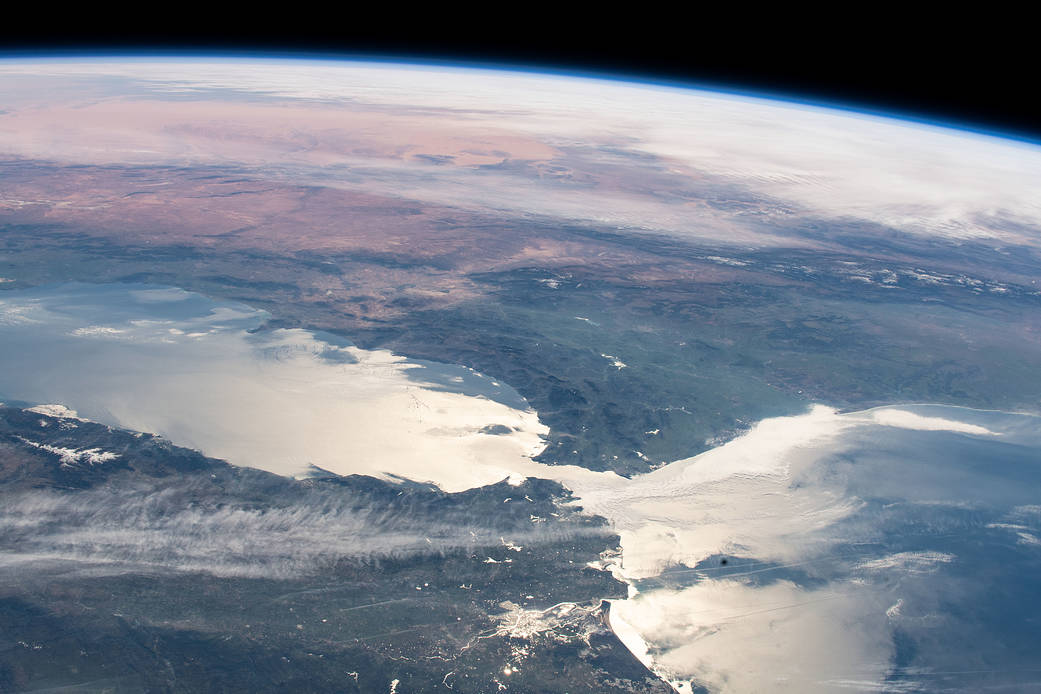'The stage was now set for the birth and growth of desert dunes': How the Sahara turned from a vast forest to the arid landscape we see today
"A very remarkable series of events took place during the late Miocene between 5.96 and 5.33 million years ago."
Millions of years ago, the Sahara was a green oasis covered in trees and grassland. So how did it become world's biggest hot desert, roughly the size of the entire U.S.?
In his book "When the Sahara Was Green," (Princeton University Press, 2021) Martin Williams explores the little-known history of this iconic landscape. In the extract from the book below, the author looks at how a vanishing ocean and global cooling set the stage for the birth of the Sahara desert.
During most (but not all) of the Paleocene and Eocene, about 66 to 34 million years ago, much of what is now the southern and central Sahara enjoyed a hot, wet climate and was covered in equatorial rain forest. Chemical weathering was intense beneath the highly organic and densely vegetated soil surface, and rocks exposed near the surface were weathered to depths up to fifty meters, a process known as deep weathering.
During the ensuing Miocene (23 to 5.3 million years ago), this region experienced uplift as well as climatic desiccation. The climatic desiccation already under way was enhanced by two independent factors.
One was the late Miocene shrinking of the vast Tethys Sea as Africa moved north towards Eurasia. The Mediterranean Sea is the shrunken remnant of this once extensive sea. As a consequence, northern Africa was deprived of an abundant supply of moist air blowing from the Tethys Sea. The second critical factor was late Miocene global cooling about 8 to 6 million years ago, which saw the spread of the modern terrestrial plant and animal ecosystems so familiar to us today.
Differential Miocene uplift across the Sahara combined with climatic desiccation and a reduced protective plant cover ushered in a period of intense erosion of the deep weathering mantle and exposure of the irregular weathering front. In many parts of the Sahara today the geomorphic legacy of this process consists of large boulders perched somewhat precariously on the rocks beneath. Uplift of the Saharan uplands caused a wave of fluvial erosion. Rivers flowing from the uplands deposited gravels, sands, and clays during the final phase of widespread fluvial erosion across the Sahara.
Related: Could the Sahara ever be green again?
Get the world’s most fascinating discoveries delivered straight to your inbox.
The origin of the Sahara as a desert probably stems from about this time. However, the Sahara was not as universally arid during the Miocene as it is today. There were quite long intervals of wetter climate during which Mediterranean plants migrated slowly southwards into the central and southern Sahara, while plants from the wet tropics moved slowly northwards.
Today the only evidence of these great migrations consists of some sparse relict populations of both Mediterranean and tropical plants that now occupy mountain refugia in the Hoggar, Tibesti, Aïr, and Jebel Marra. Plant migration at these times was facilitated by the presence of former waterways and probably took place along their valleys. Some very big rivers flowed northwards from what is now the Chad Basin across the Sahara to the Mediterranean.
These rivers carved very wide valleys, some of which are clearly visible today on the ground in the southern Libyan Desert between Tibesti volcano and the three large sandstone plateaux located just to the east of the northern tip of Tibesti. They are even more spectacular when seen from space. The combined evidence from plant and animal fossils and sediment geochemistry also confirms that the climate in the headwaters of these Miocene rivers was relatively humid, with the late Miocene vegetation in the Chad Basin comprised of a mosaic of wetlands, savanna grasslands, and woodlands.
But a very strange surprise was in store for the Mediterranean coastal regions of North Africa.
A very remarkable series of events took place during the late Miocene between 5.96 and 5.33 million years ago. At intervals during that time the Mediterranean was cut off from the Atlantic, dried out within a few centuries each time, and became a salt desert. Some geologists have suggested that the repetitive drying out of the Mediterranean was caused by earth movements. I do not find this suggestion convincing. I think it is far more likely that we are dealing with global fluctuations in sea level linked to the growth and decay of ice caps in West Antarctica.
The stage was now set for the birth and growth of desert dunes and the great sand seas that now cover about one-fifth of the Sahara.
During glacial intervals, as the ice caps grew, global sea level fell, until the shallow sill at the western end of the Mediterranean located beneath the present Straits of Gibraltar emerged above sea level and acted as a very effective dam, preventing the free flow of Atlantic surface water into the Mediterranean Basin and outflow at depth from the Mediterranean. The sill now has an average depth of about 1,200 feet (365 meters), and at the point where Africa is closest to Europe, it is about 656 feet (300 m) deep. It must have been quite shallow in the late Miocene and would have become deeper since then as a result of marine erosion.
In step with the glacial intervals, phases of inflow when ice volume was low and sea level was high alternated with phases of desiccation. The end result was accumulation of a layer of salt and other evaporites up to about 0.6 miles (1 kilometer) thick on the floor of the Mediterranean.
Whatever the cause, desiccation of the Mediterranean would have deprived northern Africa of a major source of moisture. These salt deposits are now buried beneath a protective layer of marine Pliocene sediments. A similar salt desert formed at this time on the floor of the Red Sea so that Africa was probably isolated genetically from Eurasia for much of that time, perhaps facilitating the emergence of our hominin ancestors in Africa and nowhere else.
Another consequence of the repeated drying out of the Mediterranean was repeated lowering of the outlets of all rivers draining into the Mediterranean, leading to the formation of some very deep river canyons. The Nile, for example, cut down 1.5 miles (2.5 km) north of Cairo and flowed at 557 feet (170 m) below present sea level at Aswan, located 745 miles (1,200 km) upstream of the present Nile delta. During that time, the Nile eroded about 19,200 cubic miles (80,000 cubic km) of rock from its canyon and deposited it on the floor of the eastern Mediterranean.
The net effect … was the gradual emergence of the vast and arid land that we today refer to as the Sahara. The stage was now set for the birth and growth of desert dunes and the great sand seas that now cover about one-fifth of the Sahara.
When the Sahara Was Green: How Our Greatest Desert Came to Be - $17.81 at Amazon
The Sahara is the largest hot desert in the world, equal in size to China or the United States. Yet, this arid expanse was once a verdant, pleasant land, fed by rivers and lakes. The Sahara sustained abundant plant and animal life, such as Nile perch, turtles, crocodiles, and hippos, and attracted prehistoric hunters and herders. What transformed this land of lakes into a sea of sands? When the Sahara Was Green describes the remarkable history of Earth’s greatest desert―including why its climate changed, the impact this had on human populations, and how scientists uncovered the evidence for these extraordinary events.
Text from WHEN THE SAHARA WAS GREEN by Martin Williams. Copyright © 2021 by Princeton University Press. Reprinted by permission of Princeton University Press.
The paperback version of the book is set for release on November 7.

Martin Williams is professor emeritus and adjunct professor of earth sciences at the University of Adelaide. His many books include "Climate Change in Deserts; Nile Waters," "Saharan Sands" and "The Nile Basin." He lives in Glenalta, South Australia.







